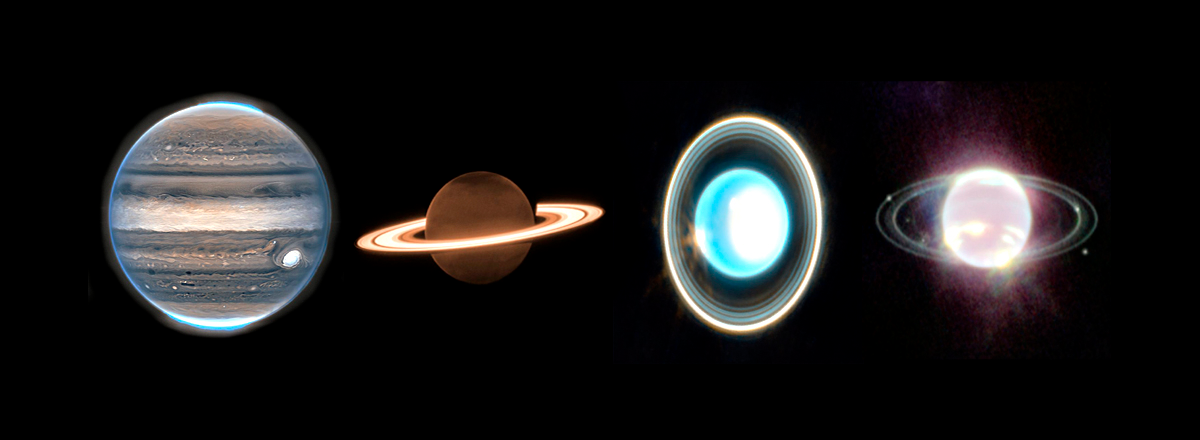James Webb Space Telescope Captures Images of All 4 Gas Giants
The James Webb Space Telescope has captured images of all four giant planets in our Solar System: Jupiter, Saturn, Uranus, and Neptune. The telescope's observations in the near- and mid-infrared range have provided stunning views of these celestial bodies.

The James Webb Space Telescope (JWST) has accomplished a remarkable feat by capturing images of all four giant planets in our Solar System: Jupiter, Saturn, Uranus, and Neptune. The telescope's observations in the near- and mid-infrared range have provided stunning views of these celestial bodies.
The recent observations of Saturn, taken on June 25, 2023, have been processed to reveal the planet's majestic rings, gleaming in golden hues against the backdrop of darkness. In contrast, Saturn's disk appears dark and relatively featureless, devoid of its characteristic cloud bands.
For Saturn, the observations were designed to dim the planet's light while highlighting the brightness of its rings and moons. This approach allows researchers to study the rings and potentially discover new structures or moons. The image of Saturn captured by JWST showcases three of its moons—Dione, Enceladus, and Tethys—positioned to the left of the planet.
Jupiter was the first gas giant to be observed by JWST, unveiling its turbulent clouds, storms, and enigmatic features such as the permanent aurorae at its poles and its faint rings. The telescope also captured two of Jupiter's lesser-known moons, Amalthea and Adrastea, against a backdrop of distant galaxies.
Neptune, often overlooked due to its great distance from Earth, received renewed attention through JWST's observations. The telescope provided the first infrared view of Neptune's delicate rings in over 30 years, as well as revealing seven of its known moons and distinct bright spots in its atmosphere.
Uranus, with its peculiar characteristics and sideways tilt, presented a mystery for astronomers. JWST's observations uncovered 11 of the 13 structures comprising Uranus' extraordinary ring system and detected an unexplained atmospheric brightening over its polar cap.

